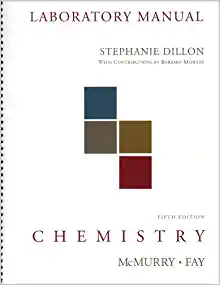Question
You and your lab partner are studying the rate of a reaction, A + B --> C. You make measurements of the initial rate under
You and your lab partner are studying the rate of a reaction, A + B --> C. You make measurements of the initial rate under the following conditions:
| Experiment | [A] (M) | [B] (M) | Rate (M/s) |
|---|---|---|---|
| 1 | 1.0 | 1.7 | |
| 2 | 2.0 | 1.7 | |
(a) Which of the following reactant concentrations could you use for experiment 3 in order to determine the rate law, assuming that the rate law is of the form, Rate = k [A]x [B]y? Choose all correct possibilities.
[A] = 2.0 and [B] = 3.4
[A] = 4.0 and [B] = 1.7
[A] = 5.0 and [B] = 1.7
[A] = 1.0 and [B] = 5.1
[A] = 3.0 and [B] = 1.7
[A] = 1.0 and [B] = 3.4
[A] = 2.0 and [B] = 1.7
[A] = 2.0 and [B] = 5.1
(b) For a reaction of the form, A + B + C --> Products, the following observations are made: doubling the concentration of A increases the rate by a factor of 2, doubling the concentration of B has no effect on the rate, and doubling the concentration of C increases the rate by a factor of 2. Select the correct rate law for this reaction from the choices below.
Rate = k[A][B][C]
Rate = k[A][C]
Rate = k[A]2 [C]
Rate = k[A][C]2
Rate = k[A]2 [C]2
Rate = k[A]3 [C]
Rate = k[A][C]3
(c) By what factor will the rate of the reaction described in part (b) above change if the concentrations of A, B, and C are all halved (reduced by a factor of 2)? The rate will be the original rate multiplied by a factor of _____ .
Step by Step Solution
There are 3 Steps involved in it
Step: 1

Get Instant Access to Expert-Tailored Solutions
See step-by-step solutions with expert insights and AI powered tools for academic success
Step: 2

Step: 3

Ace Your Homework with AI
Get the answers you need in no time with our AI-driven, step-by-step assistance
Get Started


